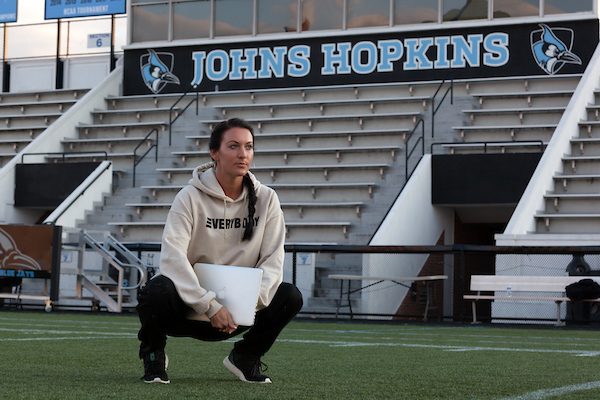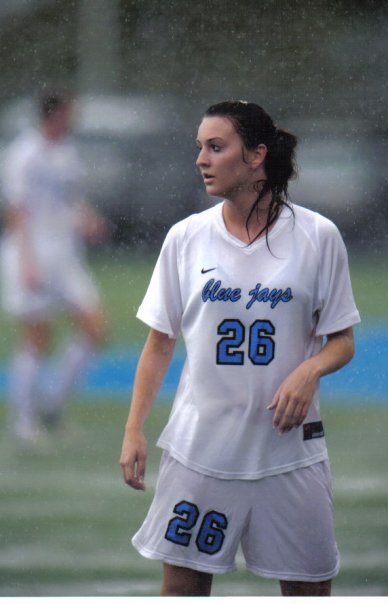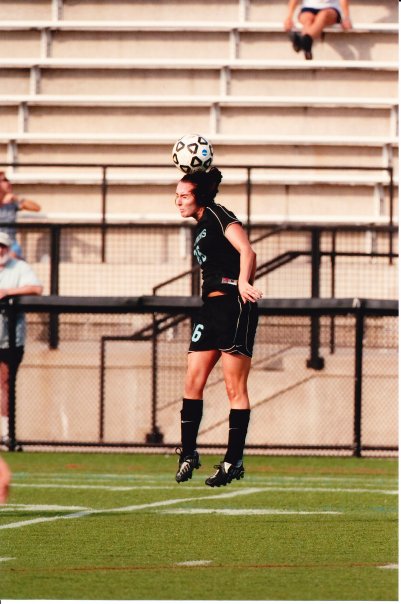
20 Oct College Soccer Recruiting Tips: Written By A Recruiter
The college recruiting process is disorienting and confusing.
And I totally get why it feels you are navigating through an unending labyrinth with a variety of directions, pathways, and twists and turns.
Full disclosure: I recruit for Johns Hopkins women’s soccer.
And no, this isn’t your clue to slide into my DMs, and network with me, with the hopes that I will give your daughter an extra look just because you know me on social media.
Just like every other college coach recruiter, I’m a professional. And I evaluate everyone equally.

As an example, there have been numerous girls who I have known for years, and they did not make our school cuts.
It’s nothing personal. It’s professional.
With that said, I not only want to set everyone up for success in their college recruiting journey, but I also want to save them time and money and ensure they end up at a place that suits them. Moreover, a school that is realistic.
This has to be a college that meets their athletic, academic, and social needs so they have a memorable and magical college experience. Adding on, it has to be a sports program where they can keep up with the level of play and make a tremendous contribution.
So what are my best college soccer recruiting tips? Let’s dive in:
1. Get started early.
I love when emails from avid and passionate players slip into my inbox about coming out to a recruiting camp. Receiving an email from a player, rather than their parent, gets them on my good side. Especially an email that starts off with, “Ms. Erica” or “Coach Erica,” they have already won me over.
Please don’t open with, “Hi, Fitsoccerqueen!”
Moving on…
I’d be remiss not to mention one caveat: when the players reaching out are high school seniors, I can’t help but ponder, ‘what the hell were their club coaches teaching them about the recruiting process?’
It’s embarrassing, to say the least.
To that end, if you are a senior, it will be very hard for you to land a spot somewhere. And I know this isn’t what you want to hear, but it’s too late.
Alas, there may be a meager chance for you to get in as a walk-on or as a late recruit, but it is few and far between, so get started early.
It saves a tremendous amount of stress.
Get started sophomore year, or beginning of junior year. Don’t wait.
2. Go to a few ID camps at different levels.
So since you’re being proactive, you need to dabble in a few different camps: D1, D2, D3, Juco, NAIA and see where you fall.
It will be telling which level you can keep up with and which future camps you need to attend.
Honestly, I know it hurts to ask, but at each of these camps ask the coaches evaluating where you fall. Can you play D1? Do you belong D3? Do you belong elsewhere?
Ask. Honest questions are critical so you don’t waste your time.
And please be prepared for a honest answer and pivot your path accordingly.
3. Stay in touch with the coaches who are interested.
Now that you have found out what level you are at, stay in touch with the coaches who are seriously interested in you.
This could mean telling them about a showcase you are playing.
Or visiting on campus.
Or making a phone call to them to ask questions about the school (that aren’t necessarily sports related).
Staying in touch is critical if you want to get seen at a 100-player ID camp where you get lost in the masses.
Coaches remember conversations, faces, and talent.
4. Be realistic.
I will always laud players for reaching high and aiming to go to schools that play at a high level.
But if you want to play for a UNC or Stanford or Notre Dame and can’t even make the fifth travel team in your state, it is time to be realistic.
Granted, there may be rare cases where you rise above the noise and prove underdogs exist, but the top 10 schools rarely look beyond ECNL, GA, or national pool.
Be realistic.
And also realize: going D2, D3, Juco, or NAIA is commendable and admirable. Many of these schools play at a tremendously high level, and you will develop as a complete player – tactically, technically, physically and mentally.

Not only do non-D1 schools play at a high level, they have exceptional team cultures, incredible coaching, and top notch player development as well.
5. Start strength and conditioning training.
Maybe I’m a biased strength coach, but starting training now.
At this point, everyone knows the game and has the skills, so how are you going to have an extra edge?
How are you going to blow college coaches away with your speed? With your ability to go into tackles? With your Messi-like agility? With your insane vertical jump on 50-50 balls?

Even beyond performance, how are you going to stay healthy for another demanding four years? And these four years will be the most rigorous yet.
So start strength and conditioning now. The longevity of your career is paramount.

I hope these college recruiting tips help propel you in the right direction.
As a recruiter myself, I have seen girls start the process too late.
I have seen girls be unrealistic with the level they are at.
I have seen girls come in de-conditioned and slow.
Be aggressive and tenacious with your approach to recruiting. College soccer is a fulfilling experience that I wish for everyone to have.
The end.
Get the TOTAL YOUTH SOCCER FITNESS BOOK HERE to get speed, strength, agility and injury prevention sample workouts.


Shelby Nickal
Posted at 12:52h, 21 OctoberThank you
erica
Posted at 18:44h, 21 OctoberYou are welcome!! 🙂
Gary F
Posted at 16:11h, 27 NovemberThanks, Coach Erica! I have. 13 year-old (8th grade) daughter who is self-motivated and crazy-passionate about her soccer. Great advice in here for her. Appreciate your post!
erica
Posted at 11:53h, 28 NovemberGlad this helped!
Michael Brown
Posted at 21:20h, 18 JanuarySage advice, Coach Erica. Our journey begins with our soon-to-be 9th grader who just made her club’s ECNL NL team. We appreciate your commitment to the sport, its players, and coaches.
erica
Posted at 22:13h, 18 JanuaryHappy to help 🙂